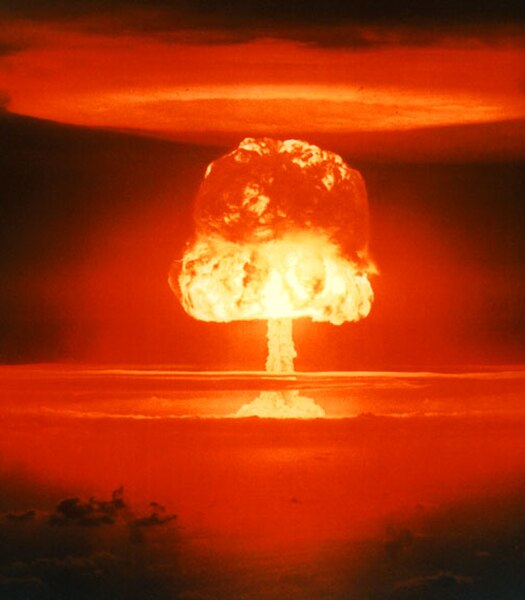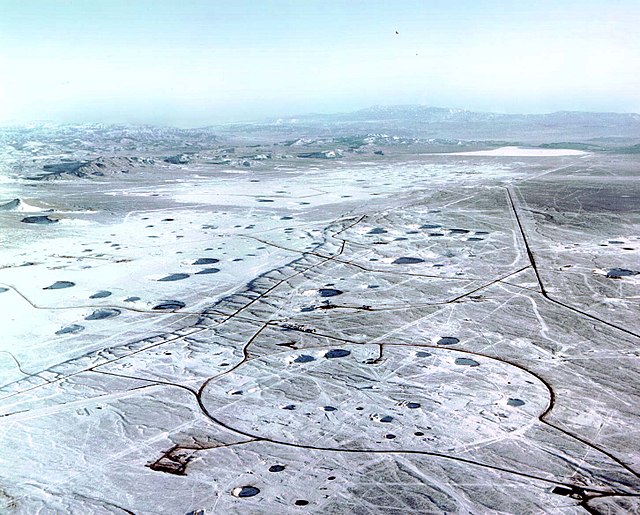A thermonuclear weapon, fusion weapon or hydrogen bomb (H bomb) is a second-generation nuclear weapon design. Its greater sophistication affords it vastly greater destructive power than first-generation nuclear bombs, a more compact size, a lower mass, or a combination of these benefits. Characteristics of nuclear fusion reactions make possible the use of non-fissile depleted uranium as the weapon's main fuel, thus allowing more efficient use of scarce fissile material such as uranium-235 or plutonium-239. The first full-scale thermonuclear test was carried out by the United States in 1952 and the concept has since been employed by most of the world's nuclear powers in the design of their weapons.
Edward Teller in 1958
Operation Castle thermonuclear test, Castle Romeo shot
Operation Grapple on Christmas Island was the first British hydrogen bomb test.
One of France's Triomphant-class nuclear-armed submarines, Le Téméraire (S617)
Nuclear weapon designs are physical, chemical, and engineering arrangements that cause the physics package of a nuclear weapon to detonate. There are three existing basic design types:pure fission weapons are the simplest, least technically demanding, were the first nuclear weapons built, and so far the only type ever used in warfare, by the United States on Japan in World War II
boosted fission weapons increase yield beyond that of the implosion design, by using small quantities of fusion fuel to enhance the fission chain reaction. Boosting can more than double the weapon's fission energy yield.
staged thermonuclear weapons are arrangements of two or more "stages", most usually two. The first stage is normally a boosted fission weapon as above. Its detonation causes it to shine intensely with x-radiation, which illuminates and implodes the second stage filled with a large quantity of fusion fuel. This sets in motion a sequence of events which results in a thermonuclear, or fusion, burn. This process affords potential yields up to hundreds of times those of fission weapons.

The first nuclear explosive devices provided the basic building blocks of future weapons. Pictured is the Gadget device being prepared for the Trinity nuclear test.
Bassoon, the prototype for a 9.3-megaton clean bomb or a 25-megaton dirty bomb. Dirty version shown here, before its 1956 test. The two attachments on the left are light pipes; see below for elaboration.
Subsidence Craters at Yucca Flat, Nevada Test Site.







